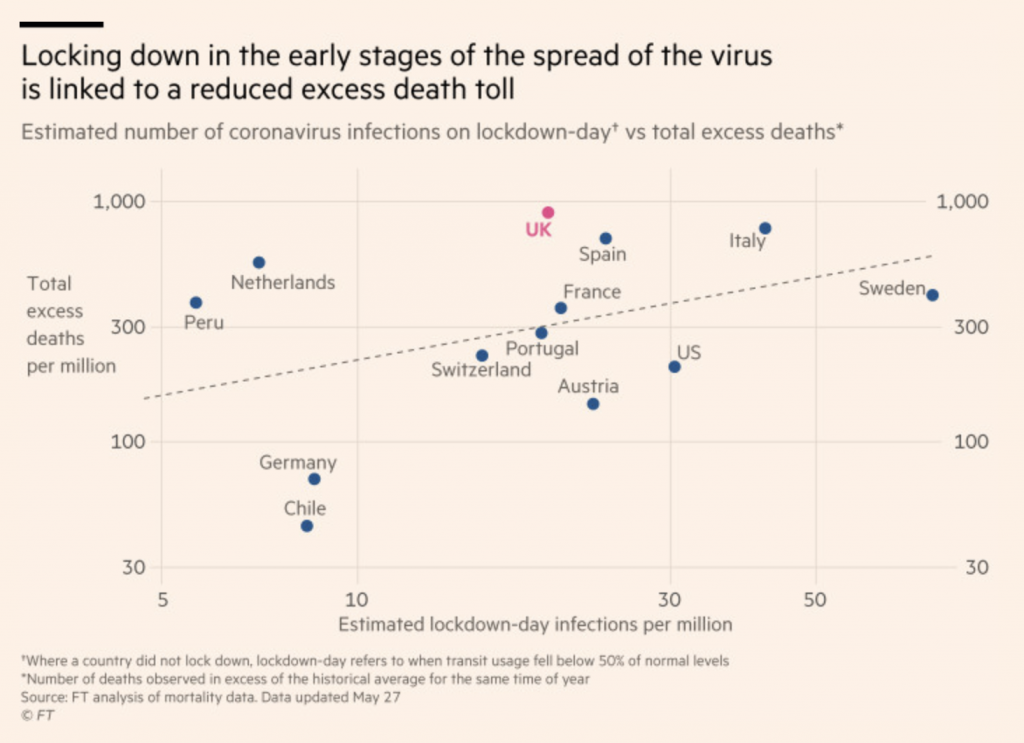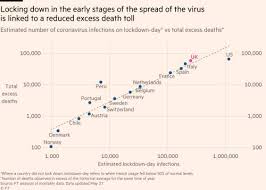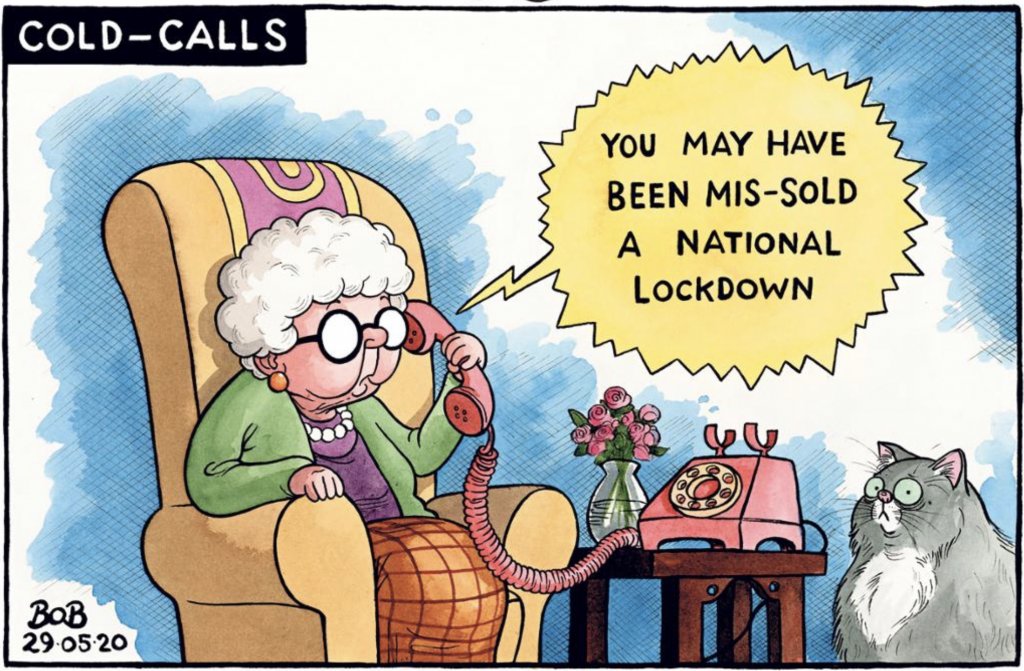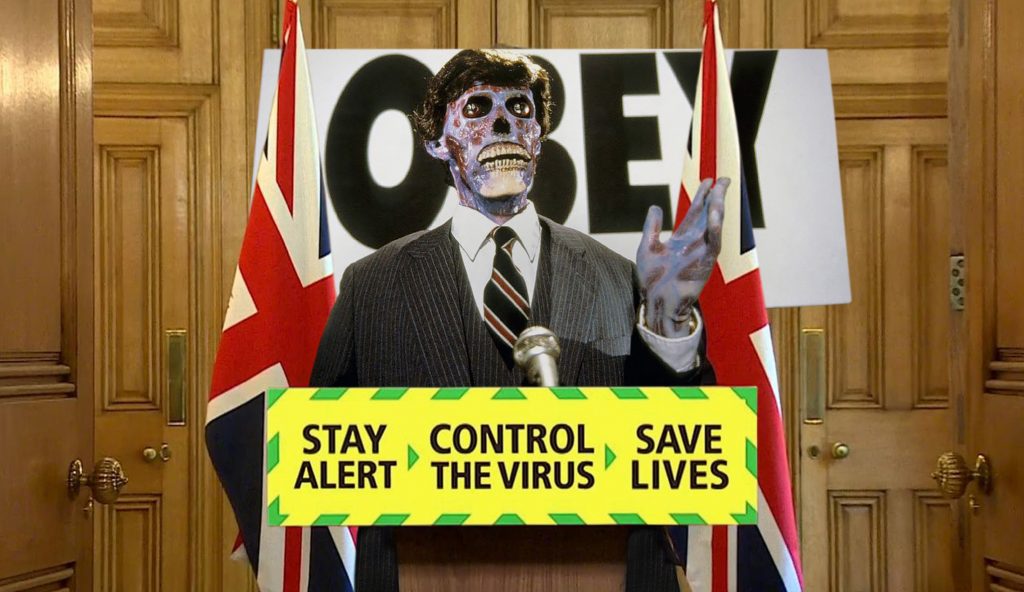
Did Boris’s announcement yesterday that up to six people from different households will be able to gather outside from Monday sound the death knell for the lockdown? It certainly feels that way for those of us who’ve been out and about on this glorious Summer day. Guy de la Bédoyère, who’s contributed many fine things to this site, has sent me a note about a motorcycle ride he took this afternoon. Sounds like things are returning to normal in Middle England…
It’s another afternoon of piercing sunshine in England on the last Friday of May 2020. The trees are in full leaf, the hedges thick and verdant. It’s a day out of one’s childhood, a summer day filled with memories of past times. I pull out one of my vintage motorcycles and set off for a short run through the countryside and villages as a break from a day of proof-reading my next book. Immediately I notice a change from other days in recent weeks. I have to wait to turn onto the main road. An endless stream of cars and vans keep me waiting. What’s this? For weeks I have been able to turn out almost without bothering to look. As I hurtle on I pass the Joint Services Flying School. The carpark is full. More vans and trucks pass me. I reach a crossroads in one of the larger villages and actually have to wait in a small queue. I turn left and pass a garage. Outside a gaggle of eight or nine children aged between 9 and 14 are on their bicycles all gathered together and enjoying a Friday afternoon like no other. It’s half-term of course but these are the days of Covid aren’t they? How many of their parents won’t be sending them back to school any time soon “because it’s not safe”. You could hardly have got 2 metres between the whole crowd of children let alone any two of them. If what some parents say is true and if one of the children is infected they’ll all be dead along with their families in a couple of weeks.
I accelerate on, watching the glint of sunshine on car roofs ahead as they approach me on the other side of the road, each one whizzing past. I head on into a road that crosses National Trust property. The stately home and its gardens are closed but there’s a public footpath and carpark on one side. It’s packed with vehicles, no doubt belonging to furloughed workers and those “working at home”. I have to dodge several joggers on the road, often running in pairs and side by side, adding to the numerous cyclists I’ve passed too (in one instance four of them in a formation barely two metres across), and also more commercial vans: painters, decorators, TV aerial vans, builders and many more. And so on and back home and once more it’s a wait to get back on the main road near my house as the cars churn past. This is the world of those who have gone back to work and those still eking out their time at home or on leisure outings before the Day of Reckoning. Some are going to look back on this as the best of times, and others the worst of times. Either way, the lockdown is dwindling and there’s one unalterable fact about summers – they always come to an end.
More Dodgy Covid Data From the Financial Times

Yesterday, the Financial Times published the above chart purporting to show that countries which had locked down the quickest had a lower excess death toll. I was immediately suspicious because it’s at odds with the numerous other papers and surveys I’ve linked to on this site showing that there’s no statistical correlation between a country’s Covid death toll and whether or not it locked down, the date at which it locked down, and how severe its restrictions are/were.
Today, my financial journalist friend who’s made many contributions to this site got in touch to tell me I was right to be suspicious. The chart is nonsense.
I’ve had a look at yesterday’s Financial Times story by John Burn-Murdoch and Chris Giles suggesting a link between excess deaths during the COVID-19 pandemic and the speed with which countries entered lockdown. Countries that locked down early had had fewer excess deaths than those which locked down later, according to the story. It confirms the widespread view among the Government’s critics that the UK’s high death rate is linked to Boris Johnson’s tardy decision to enter lockdown. A chart was published alongside the piece showing a near perfect correlation between the estimated number of infections on lockdown day and the total number of excess deaths (see below). To drive this point home, the chart’s title read: “Locking down in the early stages of the spread of the virus is linked to a reduced excess death toll.”

A sceptic might have marvelled at such a good statistical fit, particularly as we’ve never seen it before. A second sceptical thought suggested itself to me: how had the FT estimated its lockdown day infections? The methodology wasn’t explained. Still, if the data were correct, it was game over for the lockdown sceptics. At last, there appeared to be definitive statistical evidence that lockdowns saved lives.
Later in the day, however, the pink paper pulled its original chart and replaced it with a new chart [the one at the top of this article]. The new chart showed the total excess deaths per million of the population against the estimated lockdown infections per million of the population. That seemed like a sensible way of comparing countries with different population sizes. This chart carried the same title as the original and supposedly showed the same thing – the earlier a country locked down, the lower its Covid death toll.
But the data told a completely different story. The link between lockdown day infections and deaths had broken down. The US, for instance, had a much greater infection rate on lockdown day (30 infections per million) than the Netherlands (7.5 per million), but suffered far fewer excess deaths. Although the new FT chart had a regression line drawn through the data points, it was clear that there was no statistical correlation between estimated lockdown infections and a country’s excess deaths. You can see from looking at the FT’s scatter plot that the regression coefficient (R-squared) for its new, revised chart is very low and not statistically meaningful. Most of the dots are quite far away from the regression line, whereas in the first chart the dots all cluster around the line.
In fact, the new chart appears to support the recent claim from the Norwegian Health Ministry that there is no evidence that Norway’s own lockdown saved lives. Yet the FT’s original text was not revised to reflect this profound change. Instead, a note was added to the bottom of the article, stating: “This article has been modified to replace a chart linking excess deaths to lockdown dates with one linking excess deaths per million.” A puzzling comment and hardly a proper retraction. Later on the same day, the headline was changed again to account for new data which showed that Spain, rather than the UK, had the highest excess death rate in Europe.
I ran the FT’s data on excess deaths against the Blavatnik index of lockdown severity (from the end of April). In the chart I came up with, the Regression score (R-squared) is 0.16 which is STATISTICALLY MEANINGLESS. Thus, from the FT’s own data it appears that lockdown stringency has had no meaningful impact on excess deaths in either Europe or the US.
Recalculating the UK’s IFR Based On the ONS’s Antibody Survey

Yesterday, I did a back-of-envelope calculation to work out the infection fatality rate (IFR) in the UK based on the just-released results of the ONS’s seroprevalence survey which estimates that 6.78% of the population has antibodies. The survey didn’t include people in hospitals or care homes, just those “in the community”. Consequently, I stripped out the deaths that have occurred in care homes from the latest UK totals, but not hospitals, assuming that the people who’ve died in hospitals were originally “in the community”. I ended up with an IFR of 0.82% and because this is so at odds with the latest CDC estimate I concluded that either the numerator or the denominator must be wrong.
However, the number-crunching genius Alistair Haimes has been in touch to say I miscalculated.
Just gone through your calculation of the UK IFR from yesterday – I’d actually used those results and got to an IFR of 0.25% which is strikingly close to the CDC’s estimate of 0.26%.
You need to make the following changes to your calculation:
1. You assumed that only 21% of deaths are care home residents based on the European Centre for Disease Prevention and Control data, but actually ONS figures show it’s 37.4% (as at May 1st: 12,526 care home residents out of the 33,480 Covid deaths til then = 37.4%). Very sneakily, the ONS only generally shows “care home deaths” as those where the death is actually inside the care home, but in a release on May 15th they also include care home residents in England and Wales who die in hospital.
2. You also need to remove infections acquired in hospitals, where the percentage of infected people is far higher than “in the community”. That is “somewhere between 10% and 20%” according to the NHS figures from recent Guardian article. Say mid-way, 15%.
3. If we deduct those care home deaths (37.4% of 47,343 is 17,706) and those who caught the virus in hospital (15% of 47,343 is ~7,000), the total number of deaths “in the community” comes to 22,637.
4. Having sorted out the numerator, you now need to look at the denominator. That means accounting for the percentage of people who fight off the virus (so should be included in the number who’ve been infected) using antibodies from other coronaviruses. According to the implications of this article in Cell, you might well have to double the percentage of the population testing positive for antibodies in a seroprevalence survey to get the true figure. That means doubling the 6.78% to 13.56%. 13.5% x 67 million = 9,085,200.
5. So what’s the IFR? 9,085,200 ÷ 22,637 = 401.34 and 100 ÷ 401.34 = 0.249, so an IFR of ~0.25%.
Canadian Columnist Fired For Covid Dissent

Brian Jones, a columnist for a Canadian newspaper called the St John’s Telegram, has lost his weekly gig after writing a piece in which he pointed out that public sector workers in Canada are having an easier time of it during lockdown than private sector employes. The former have been furloughed on full pay, while the latter are expected to subsist on $2,000 a month. Here’s an extract:
It is more proof, as if any were needed, that Government workers enjoy a special status paid for by everyone else, even by people who lose jobs and then receive a measly $2,000 per month.
A laughable explanation is that Government employees are working from home, when possible. Please. Civil servants move at half speed even when they’re in the workplace.
Although, to give them their due, there were credible reports of Transportation and Works employees taking shovels home so they could lean on them in their living rooms.
Needless to say, this provoked a storm on Canadian Twitter, with hundreds of outraged readers demanding that Jones be fired for wrongthink. So what did the Telegram‘s editors do? Tell the hashtag activists to take a running jump? Alas not. They fired the heretical columnist. Here’s how they announced the decision – on Twitter, naturally:
Dear Readers, as a daily news publication we aim to offer you an informative mix of features, news, fun diversions and diverse opinions. With opinions, in particular, sometimes we push the edges and explore unpopular opinions. When we go too far, you tell us.
We’re always grateful for that. This week, you stepped up once again with scores of readers responding to Brian Jones’s May 20th column. Your feedback was an important gauge for us and for him, and, in response, he has decided that that this week’s column will be his last.
As excuses go, that’s right up there with being told your opinions “violate our Community Guidelines”. Solidarity, brother.
Dodgy Death Statistics
A reader provides yet another anecdote of a doctor ascribing a death to COVID-19 when it clearly wasn’t. I get a lot of these.
I met up with a friend of mine the other day and he mentioned he had spoken to a mutual friend of ours the other week. He said that our friend’s gran sadly passed away in a care home the other week. However, on the death certificate – you guessed it – cause of death COVID-19.
She tested positive six weeks ago, recovered form the virus (two Covid tests to confirm she was negative) the following week. Then sadly she died last week as she was very unwell before hand.
I don’t understand how the cause of death can be COVID-19 after testing negative to show she had fought the virus off, she can pass away a month later and then have her death go down as a Covid death?
Donor-Conceived Babies Cannot Find Out Who Their Biological Parents Are
Following last week’s news that it’s nigh-on impossible to register a new birth at the moment – because of the lockdown, natch – a reader has contacted me to point out that donor-conceived people cannot obtain any information about who their biological parents are while the crisis continues.
A notice on the website of the Human Fertilisation and Embryology Authority informs people that: “Due to COVID-19, we cannot currently process any applications for information.” It blames it on the fact that fertility clinics, which it depends on to help it access this information, are not “fully operational”. It then adds: “We estimate it will be several months before sufficient support is available across the sector to enable the… services to restart.”
President of Tanzania is Sceptic of the Week

Among the heroes to emerge from the coronavirus pandemic, Dr John Pombe Magufuli, the President of Tanzania, is one of the least likely. Yet hero he is, having sacked his chief health advisor after a goat and a papaya tested positive for COVID-19 in the Government lab, and refused to lockdown the country. According to Worldometers, the death toll in Tanzania currently stands at 21. That’s since the beginning of the year, not in the last 24 hours.
In his latest audacious move, President Magufuli has banned face masks, as well as ordered schools and businesses to reopen. He also recently told the American envoy to Tanzania not to “cause panic” after the American embassy in the capital, Dar es Salaam, wrongly claimed that the chances of contracting the virus were “extremely high”.
Top man.
An American in London Writes…
Nice blog post from the writer Michael Hurley about what it’s like being an American ex-pat living in London during lockdown. It’s entitled “Land of Fear and Loathing“. He’s one of us, but more pessimistic than me. Here are a couple of paragraphs:
Unlike some, I do not kindle hope that the many able commentators who keep pointing out the continuing tragedy of the lockdown policy and the absurdity of the “new normal” of social distancing will eventually win the argument with their fellow Britons. There is no argument to be won. As the American cartoon character Pogo would say, “I have met the enemy, and he is us.”
We are the new normal. We are not the people our grandparents were. We are the ones eagerly participating in this extravagant charade that we are all about to die from shaking hands with our neighbours or walking outside without a mask. We have the power to choose the kind of society we live in by refusing to give aid and comfort to the scaremongers through our silence. Too many of us simply refuse to speak.
Worth reading the whole thing.
Sign Petition to Get Club Cricket Back Up and Running
A reader sent me this Change.org petition calling on the England and Wales Cricket Board (ECB) to stop being such big girls blouses and allow county cricket to restart. The ECB recently announced a further delay to the start of the professional domestic cricket season, with no domestic cricket to be played until August. As the author of the petition writes:
I’m urging people to sign this petition and plead with the ECB/UK Government to work hard at making all forms of recreational cricket matches possible from early July 2020.
No cricket season in 2020 will have a major effect on many clubs across the country financially.
No cricket at club level this year could see participation levels and interest in the sport drop which is not what anyone wishes to see especially within the younger generation.
Please sign the petition.
In Wales, the First Minister is Granting People “Permission” to Leave Their Homes!
I got an email from a disgruntled reader in Wales following yesterday’s announcement by the First Minister about the easing of lockdown restrictions.
Had to comment on the latest measures here in Wales which tells us that we’re allowed to leave our homes, but have to stay local and within five miles. I do understand that the FM has said there’s room for interpretation as we do not have a bus within five miles of here, never mind a shop or a relation. But will the police give us this same latitude?
One thing that really annoyed me though was his use of the phrase “we are offering people permission…” Sorry? I thought this was a free country? I understand we have emergency powers in place, but shouldn’t the politicians be talking about “we are returning some of the civil liberties we have withdrawn” instead?
I think if I were to write down the emotion I feel whenever I hear such words as “permission” being used, it would be GRRRRR.
“It’s all bullshit,” says Russia’s Head of Coronavirus Information

In Russia, the doctor and television presenter Alexander Myasnikov has been given the task of informing the Russian people about coronavirus treatment and prevention methods and to battle “fake news” about COVID-19. He recently called the country’s reported low death rate a “Russian miracle”. But in a moment of candour, when he thought he was off air, he blurted out the truth, according to the Moscow Times.
In an interview that aired Wednesday, Myasnikov gestured for the cameras to stop running and said candidly: “It’s all bullsh*t.”
“It’s all exaggerated. It’s an acute respiratory disease with minimal mortality,” he told television personality Ksenia Sobchak in the interview for her YouTube project.
“Why has the whole world been destroyed? That I don’t know,” Myasnikov said.
Round-Up
And on to the round-up of all the stories I’ve noticed, or which have been been brought to my attention, in the last 24 hours:
- ‘Prevalence of “silent” COVID-19 infection may be higher than thought‘ – Article in a medical journal pointing out that 80% of passengers on a cruise ship infected with Covid were asymptomatic
- ‘Why No One Can Explain the Drop in Coronavirus Cases in Israel‘ – Meirav Arlosoroff points out that the number of new cases has fallen in Israel since lockdown was eased, contrary to the prediction of many. Why were the experts’ models so mistaken?
- ‘Let’s learn from this pandemic to be better prepared for the really big one‘ – Professor Ramesh Thakur on the rise and fall of coronavirus modelling
- ‘Japan’s Covid success is a mystery‘ – Philip Patrick in the Spectator marvels at well Japan has navigated the crisis, with no lockdown
- ‘Was the lockdown worth it?‘ – Inaya Folarin asks a question to which the answer is no in Spiked
- ‘Easyjet’s 30% cut in jobs bigger than feared‘ – Job losses at EasyJet continue to mount
- ‘Car production fell to just 197 vehicles in April‘ – Things aren’t looking good for the British motor industry, reports the Times
- ‘Bodyguards for Italian leaders amid anger at economic woe‘ – Will Boris Johnson and Dominic Cummings soon require the same service?’
- ‘Seven in ten testing positive show no symptoms‘ – More data from yesterday’s ONS survey
- ‘People asked to self-isolate will not be told name of informant amid fears of reprisals‘ – The Telegraph reports on precautions being taken to protect Covid informants to Matt Hancock’s test-and-trace task force. But won’t this increase the likelihood of vexatious reports?
- ‘Extent of Covid-19 Deaths Failed to Be Captured by Most Countries‘ – The Wall St Journal delves into the dodgy Covid death statistics
Small Businesses That Have Reopened
A couple of weeks ago, Lockdown Sceptics launched a searchable directory of open businesses across the UK. The idea is to celebrate those retail and hospitality businesses that have reopened, as well as help people find out what has opened in their area. But we need your help to build it, so we’ve created a form you can fill out to tell us about those businesses that have opened near you. Please visit the page and let us know about those brave folk who are doing their bit to get our country back on its feet.
Shameless Begging Bit
Thanks as always to those of you who made a donation in the last 24 hours to pay for the upkeep of this site. It still takes me about nine hours a day, what with doing these updates, moderating your comments and commissioning original material. If you feel like donating, however paltry the amount, please click here. And if you want to flag up any stories or links I should include in tomorrow’s update, email me here.
And Finally…

This picture is for fans of the John Carpenter movie They Live, a cult classic about how aliens are living among us and use subliminal messages to ensure compliance with their diabolical plans. To most people in the film, they appear normal. But occasionally they get to see what the aliens really look like…
For more on the psychological techniques being used by the Government to control the population, see this YouTube video by Dr Vernon Coleman. Watch it before it’s taken down…












To join in with the discussion please make a donation to The Daily Sceptic.
Profanity and abuse will be removed and may lead to a permanent ban.